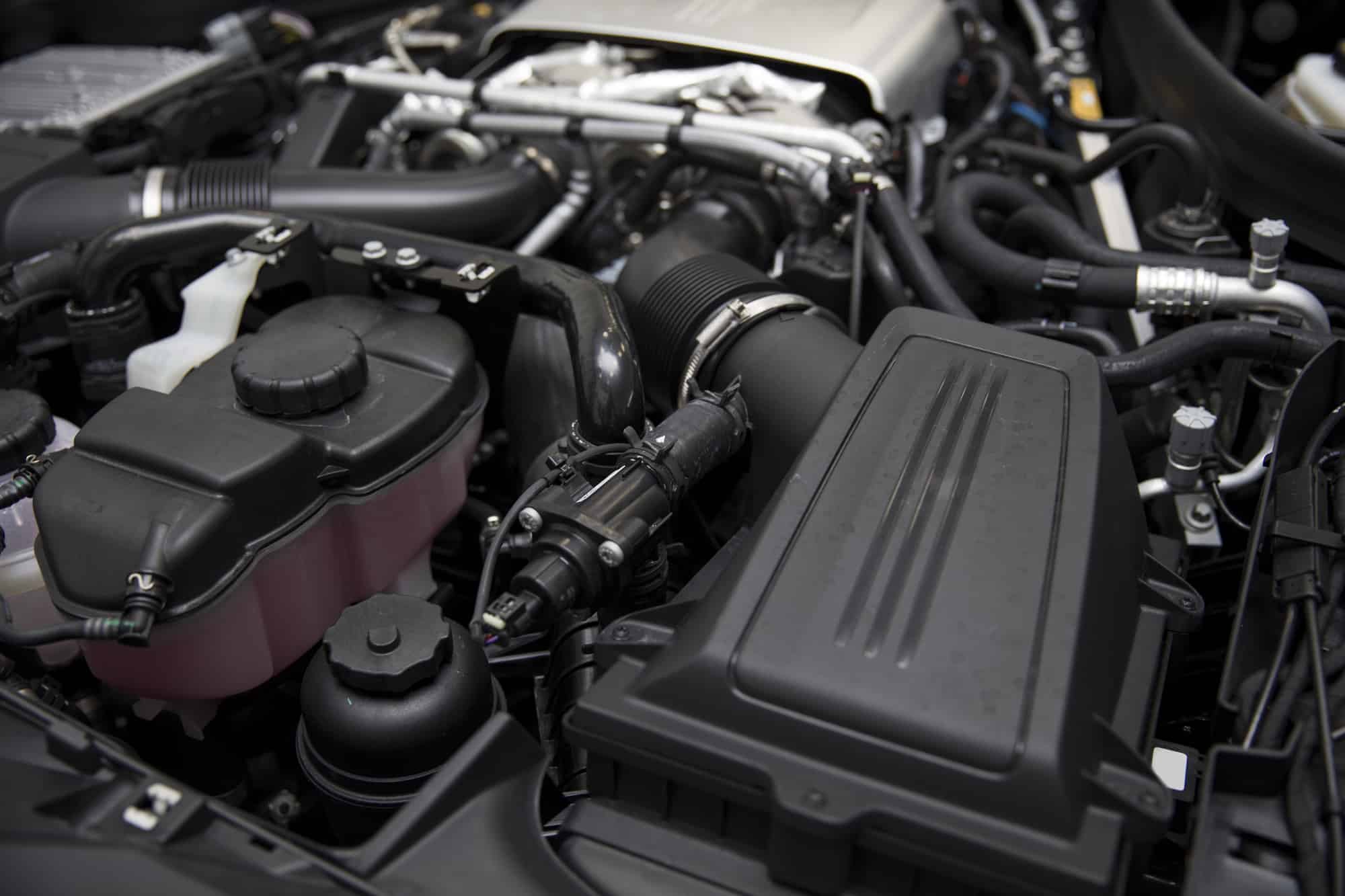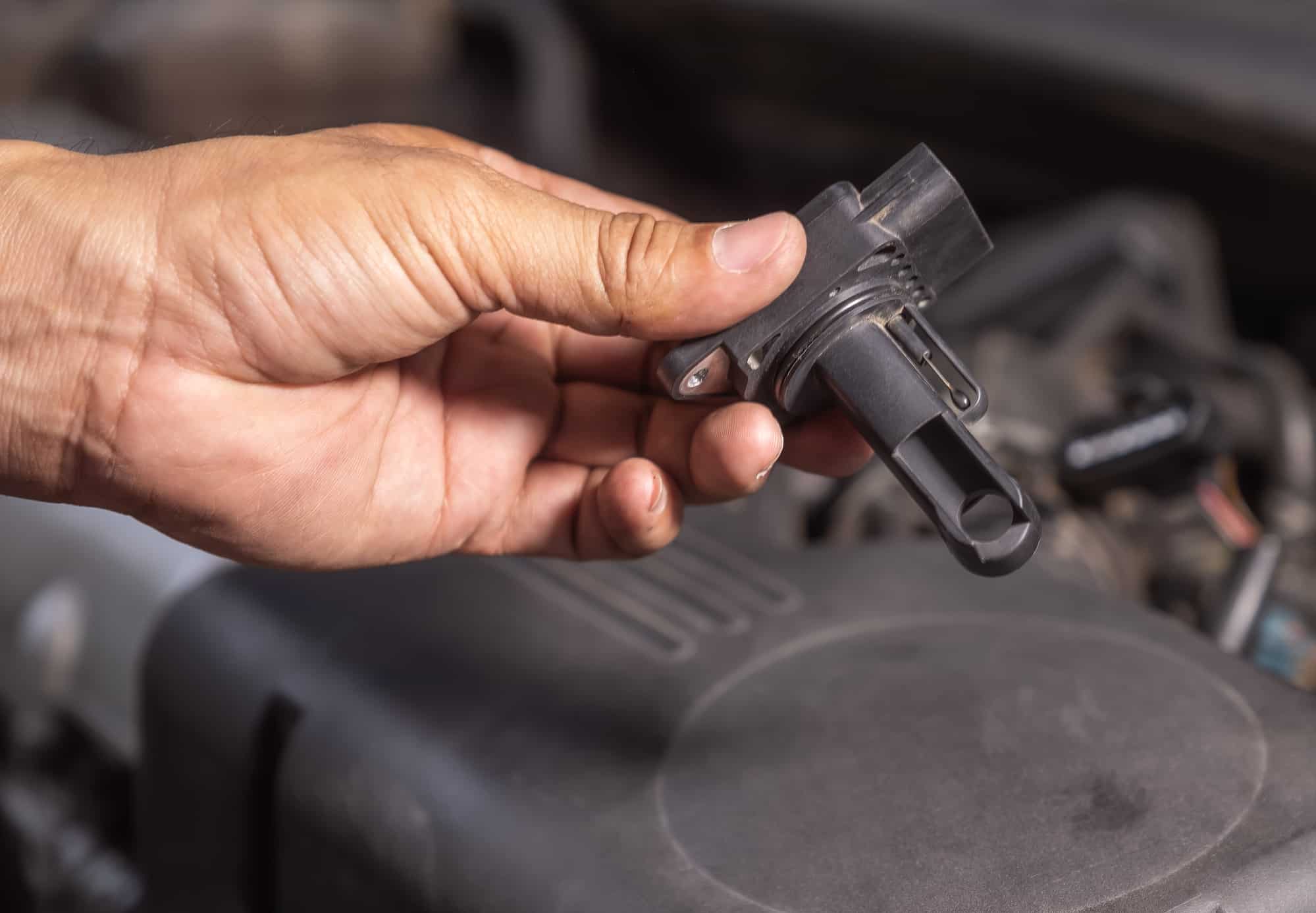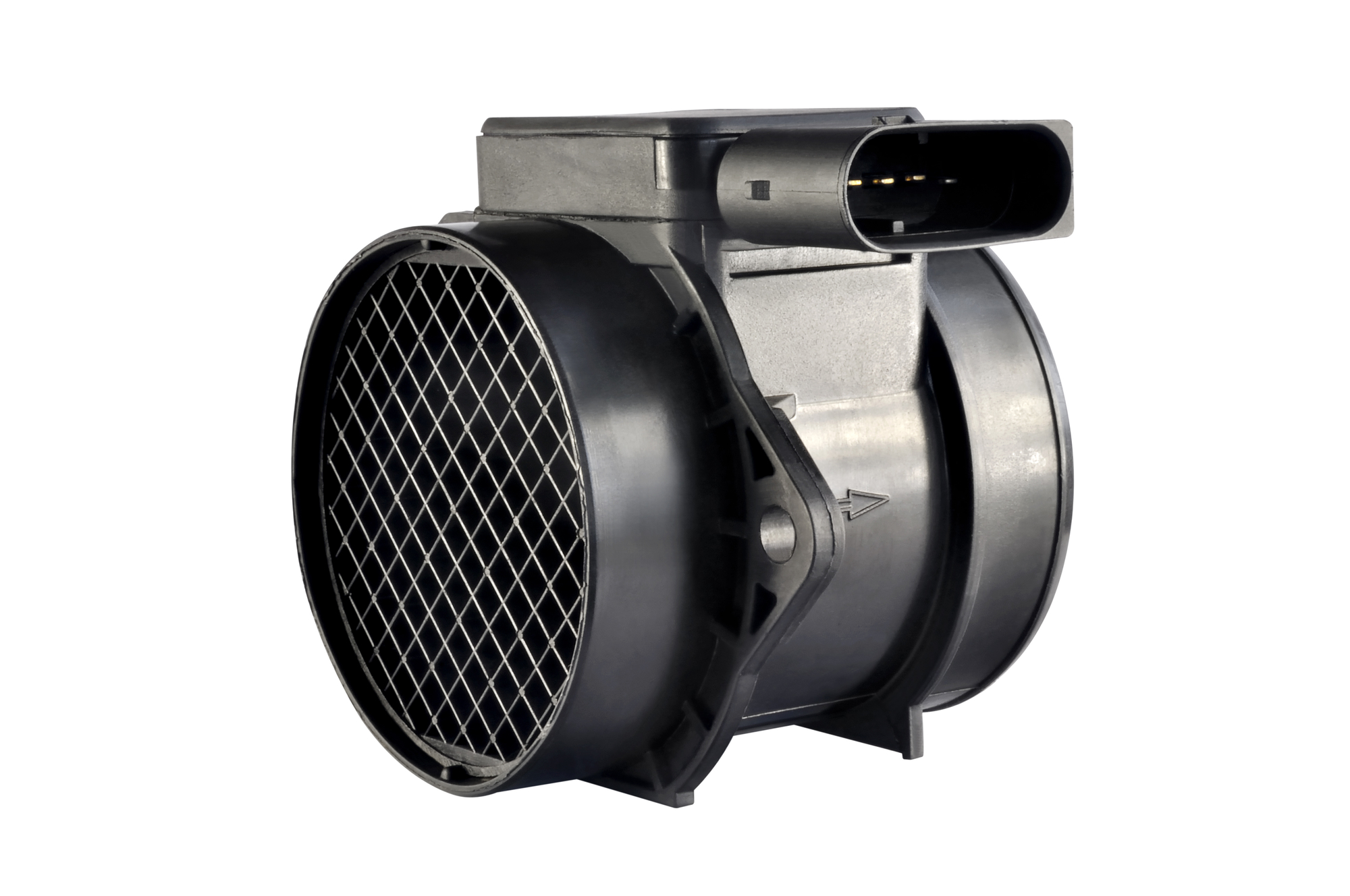The symptoms of a bad mass air flow sensor include low engine power, poor fuel economy, an engine that won’t start, a check engine light on the dash and a gas smell from the exhaust fumes.
The job of the mass air flow sensor is to keep track of the amount of air coming in through the air filter, so that the ECU can adjust the amount of fuel getting into the engine.
If the mass air flow sensor isn’t working properly then you will be faced with one or more symptoms such as lack of power and bad fuel economy.
As an Amazon Associate we earn from qualifying purchases.
Of course, there are many other reasons why your car might not be running properly, so today I’m going to explain how to diagnose a bad or failing air flow meter and see what’s involved in fixing it.
7 Symptoms of A Bad Mass Air Flow Sensor
The mass air flow sensor (MAF) data is vital for fuel delivery control. The amount of air entering the engine through the air filter is going to fluctuate depending on how fast the engine is running.
If you push down on the accelerator, the engine will need more fuel to increase the rate at which the pistons are moved. In order to increase speed, more fuel and air is needed. The amount of fuel must be kept in line with the amount of air coming in.
Here are some of the most common bad mass air flow symptoms that you will typically come across.
1. Check Engine Light appearing on the dashboard
A bad mass air flow sensor will usually trigger a check engine light. This is because the ECU will detect an out of range value coming from the MAF sensor and the check engine light is its way of letting you know that something is wrong.
2. An engine that is difficult to start
Since the ECU can’t measure incoming air mass, it needs to compensate for this lack of information using the rest of the engine sensors. Depending on ECU’s program sophistication and installed sensors, the vehicle start can be very difficult. On older models, you may find that the engine doesn’t start at all.
3. Poor fuel economy
Without proper information coming from the MAF, the ECU won’t be able to operate efficiently and thus, a noticeable decrease in fuel economy will be evident. Most ECUs will revert to a default air mass value range to keep the engine running. This is not an accurate value and will result in more fuel being fed into the engine than is required.
4. Rough Engine Idle
Depending on the vehicle year and maker the ECU may not compensate for this failure during idle. This might cause a rough idle or even an engine dying occasionally while idling.
5. Engine hesitation during acceleration
A bad mass air flow sensor won’t reliably measure the amount of air coming in through the air filter, resulting in a delay in the fuel delivery during sudden acceleration and a temporary lack of power. In such a scenario, the ECU will sense the drop in engine vacuum first and then using other sensors, will decide if more fuel is required.
That process could take half a second to a second, more than enough to perceive the hesitation. This condition will be worse under wide open throttle acceleration.
6. Engine hesitation under load
Similar to the previous point, if you are driving uphill, towing, or demanding power from your engine, you will find a serious hesitation due to lack of proper information regarding air mass entering the engine.
7. Gas smell from the exhaust pipe
A failure to deliver the exact amount of fuel to the engine, will affect the fuel to air ratio in the combustion chambers.
If there is too much fuel getting into the engine, this can end up in the exhaust fumes and could cause a noticeable gas smell coming from your exhaust pipe. It can also cause premature failure of the catalytic convertor if left un-repaired.
What is A Mass Air Flow Sensor?

A Mass Air Flow (MAF) sensor is a key component in a vehicle’s engine management system. Its primary function is to measure the volume and density of air entering the engine.
This data is critical because it determines how much fuel needs to be mixed with the air for efficient combustion.
The MAF sensor helps ensure the engine runs smoothly, efficiently, and with optimal power, while also helping to monitor and reduce emissions. It is typically located between the air filter and the engine’s intake manifold.
How Does A Mass Air Flow Sensor Work?
There are two primary types of MAF sensors: hot wire and vane meter. The hot wire MAF uses a heated wire to measure air flow based on how much the wire cools as air passes over it.
The vane meter, on the other hand, uses a flap or vane that is pushed by the incoming air, with the vane’s movement determining the air flow. Each type has its own method of operation but serves the same fundamental purpose of ensuring efficient engine performance.
How Do You Diagnose A Bad Mass Air Flow Sensor?
To diagnose a potentially faulty Mass Air Flow (MAF) sensor, follow these steps:
- Use an OBD-II Scanner: Connect the scanner to your car to check for any diagnostic trouble codes related to the MAF sensor.
- Visual Inspection: Look for visible signs of damage or contamination on the MAF sensor.
- Check for Symptoms: Note issues like poor acceleration, rough idling, or stalling, which can indicate a MAF problem.
- Perform a Voltage Test: Using a multimeter, test the MAF sensor’s voltage output to see if it’s within the normal range.
- Compare with Specifications: Match your findings with the manufacturer’s specifications to determine if the sensor is functioning correctly.
Consult a professional mechanic for a definitive diagnosis if you’re unsure.

How To Replace A Bad Mass Air Flow Sensor
The MAF sensor is usually located between the throttle body and the air filter housing. It’s not a difficult job to replace the sensor as it usually only involves removing the air filter box and some air pipes.
Recommended tools: OBD2 Code Reader, safety glasses, mechanics gloves, appropriate screwdriver and/or wrench, proper illumination (LED flashlight),
- > Preliminary steps: ensure that the ignition switch is off and then disconnect the vehicle battery. Detaching the negative terminal is usually enough.
- > Remove MAF sensor connector: this step may be tricky in some models. Generally speaking, the connector has a plastic tab that you should push down while you pull out the harness. But in many cases, there is a small security clip (sometimes plastic, sometimes metallic) that must be removed first using an adequate screwdriver.
- > Remove MAF sensor screws: most mass air flow sensors use clamps on each side to connect to intake manifold air duct. Loose both clamps using the adequate screwdriver and remove the sensor. Be cautious while doing so.
- > Install the new MAF sensor: retire the old sensor and then install the new one. Double check that you’re using the adequate part number.
- > Reconnect sensor and battery: once you are done, reconnect the sensor (don’t forget security clips) and then the battery terminal.
- > Clear DTC memory: using the OBD2 code reader clear the ECU memory to prevent any false code been stored. You will need entering in KOEO mode for doing so.
- > Perform driving cycle: once you are done, drive the vehicle for more than 10 minutes. Try to accelerate as you would normally do.
How to clean a Dirty mass air flow sensor
Sometimes you may be able to extend the life of the mass air flow sensor by cleaning it. As explained above, the sensor can become covered in grease and dirt and this can affect its performance.
In my experience, if the engine is performing very badly, then the sensor may be worn as well as dirty. A dirty MAF sensor will affect things like fuel economy and may cause a delay in acceleration, but usually won’t cause a misfire or engine cut out. If the check engine light comes on, then it usually points to a sensor that is broken and cleaning it won’t make any difference.
Here are the basic steps involved in cleaning a mass air flow sensor. They may differ from vehicle to vehicle, so it’s a good idea to refer to a service manual if possible. I usually clean the sensor whilst it is still fitted to the car, as there is usually no need to remove it, but some people prefer to remove it, both approaches work fine.
1. Remove/disconnect the air filter box . Locate the air filter box and loosen the connection between the mass airflow sensor and the air filter box. You may need to remove the air filter box completely. You need clear access to the mass air flow sensor housing without removing it from the vehicle.
2. Remove the mass air flow sensor. Once you have access to the mass air flow sensor, carefully remove any larger pieces of dirt such as leaves or small stones etc. There shouldn’t be any dirt on this side of the air filter, but sometimes if the air filter is dirty and has not been changed in a long time then dirt can accumulate here. Remove the sensor from the air filter box or from the vehicle.
3. Clean the surface of the MAF sensor. The hot-wire sensors of a MAF are very delicate, you need to proceed with extreme caution and never ever use any decarbonizing, acid, aggressive detergent or similar product on it.
To clean the sensor surface, you should only use a Mass Air Flow Sensor cleaner (MAF cleaner) or electrical contact cleaner. Try not to touch the sensor surface with your hands as grease and dirt from your hands can damage it.
Let the sensor surface dry completely before refitting it to the vehicle.
4. Refit the mass air flow sensor to the car. Refit everything carefully, and be sure to reconnect the wiring harness to the MAF sensor housing. If necessary, replace the air filter with a new one.
As an Amazon Associate we earn from qualifying purchases.































I’ve been experiencing a decrease in fuel economy and rough idling with my car. Could these issues be directly related to a faulty mass air flow sensor, or should I be considering other potential problems as well?
Could a bad mass air flow sensor cause my car to stall immediately after starting, even if there’s no check engine light on?